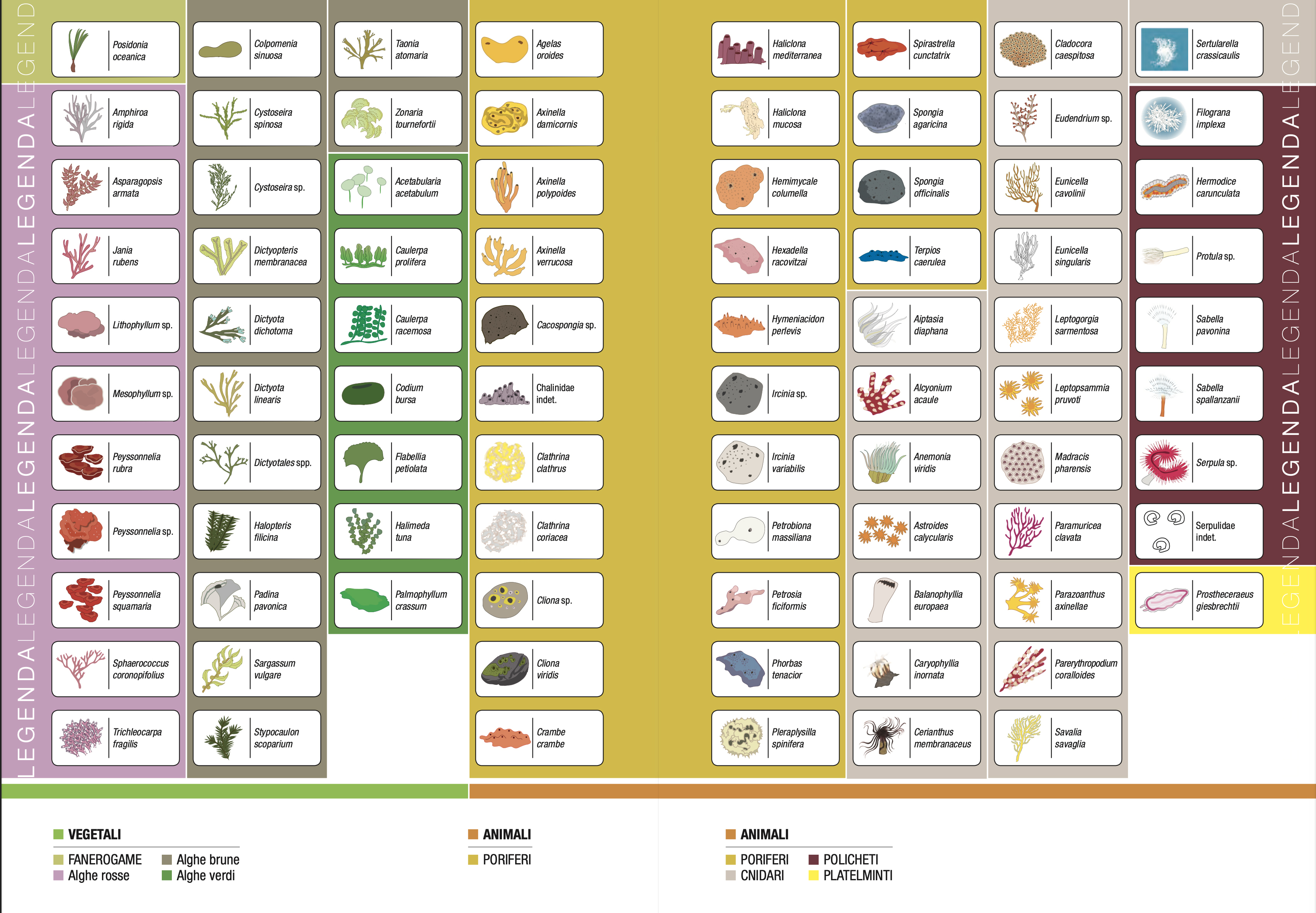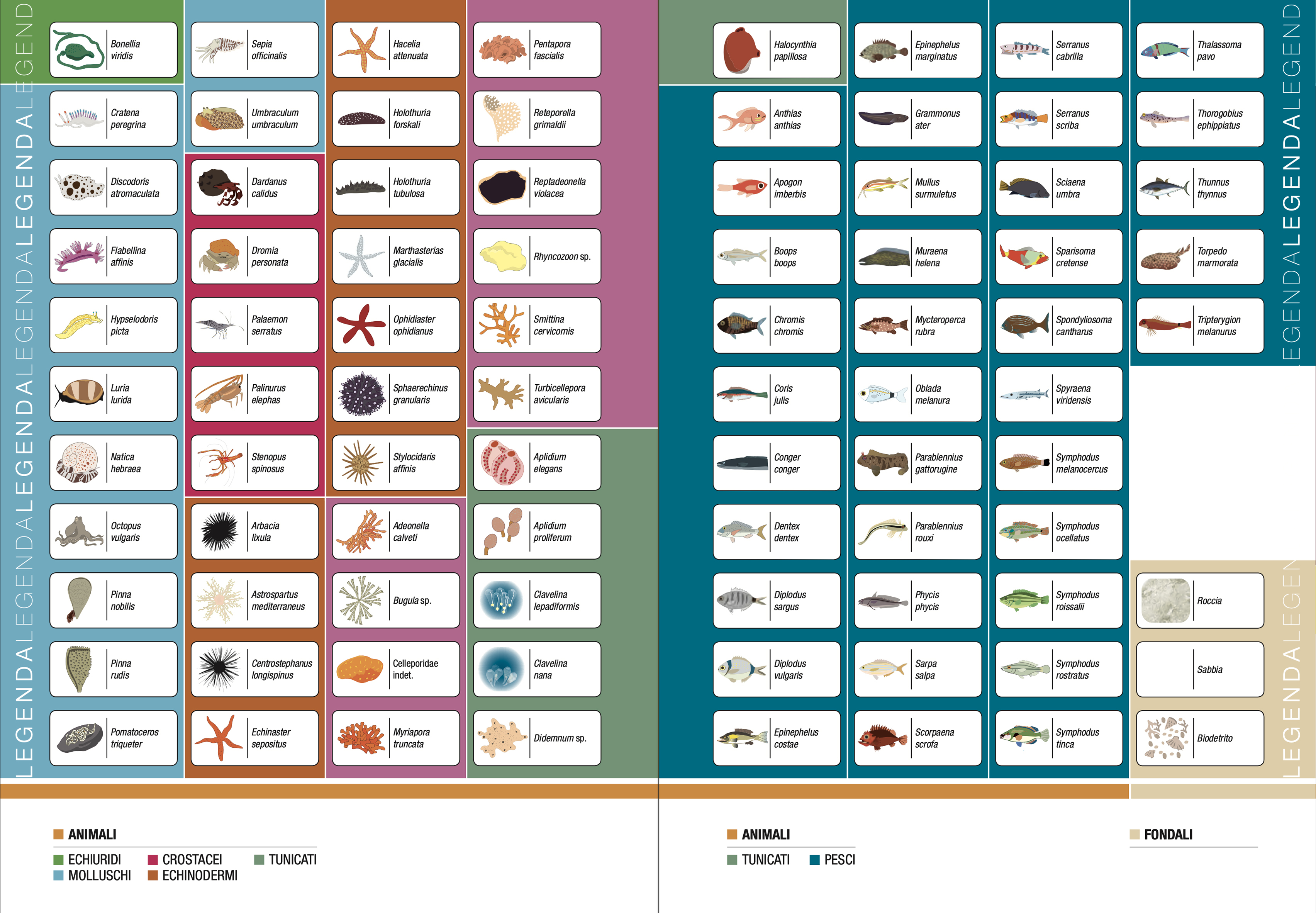Site 11 - Scoglio Spantillo
This itinerary is characterised by alternating environments rich in colourful and diverse flora and fauna. The descent is on a rocky plateau at a depth of about 20 m, where the posidonia alternates with algal populations (Halimeda tuna, Padina pavonica, Dictyotales spp.). Large sponges (Spongia officinalis, Ircinia sp.) can be seen on the substratum, while perch (Serranus cabrilla), sciarrani (S. scriba) and seabreams (Diplodus vulgaris) swim near the posidonium. The bottom slopes down quickly and colourful patches of sponges (Agelas oroides, Crambe crambe, Cacospongia sp., Cliona viridis) and algae (Lithophyllum sp., Asparagopsis armata) appear on the vertical walls. At a depth of about 25 m, a concreted vault marks the entrance to a small cave. The rock is coloured by the cnidarians Astroides calycularis and Leptopsammia pruvoti, the sponges Phorbas tenacior and Axinella damicornis, the ascidians Aplydium proliferum and Aplydium sp. Green spots of the algae Palmophyllum crassum and red spots of Peyssonnelia sp. encrust the rock surface, while specimens of the sleeping crab (Dromia personata) can be seen in the small crevices. Inside a small cave, sponges such as Hexadella racovitzai, A. damicornis, Clathrina clathrus, C. coriacea and Petrosia ficiformis dominate, on which several specimens of the nudibranch Discodoris atromaculata stand out. Clouds of mullet kings (Apogon imberbis) swim between the passages. Following the seabed leading towards the exit of the small cave, at about 27 m, there are some collapse boulders with numerous sponges including A. verrucosa, A. oroides and several specimens of holothurians (Holuturia tubulosa). A brown grouper (Epinephelus marginatus) finds its burrow in a crevice inside a ravine. On the bottom, near the exit from the ravine, a large 'elephant ear' sponge (Spongia agaricina), a few fins (Pinna nobilis, Pinna rudis) and octopus burrows (Octopus vulgaris). With a little attention, specimens of the small platyhelminth Prostheceraeus giesbrecthii, evident by their blue stripes, can be seen among the algae, moving slowly on the orange sponge Crambe crambe. A large rock attracts attention due to the presence, on the western side, of numerous colonies of the red gorgonian Paramuricea clavata, large specimens of the sponge S. agaricina, pink spots of H. racovitzai. A beautiful specimen of cyprea (Luria lurida) is a popular encounter. On the way up, the black scorpionfish (Scorpaena porcus), dentex (Dentex dentex), seabream (Diplodus vulgaris) and forkbeard (Phycis phycis) can still be recognised among the fish.
Legend:


RES Edizioni, Sarzana (SP)